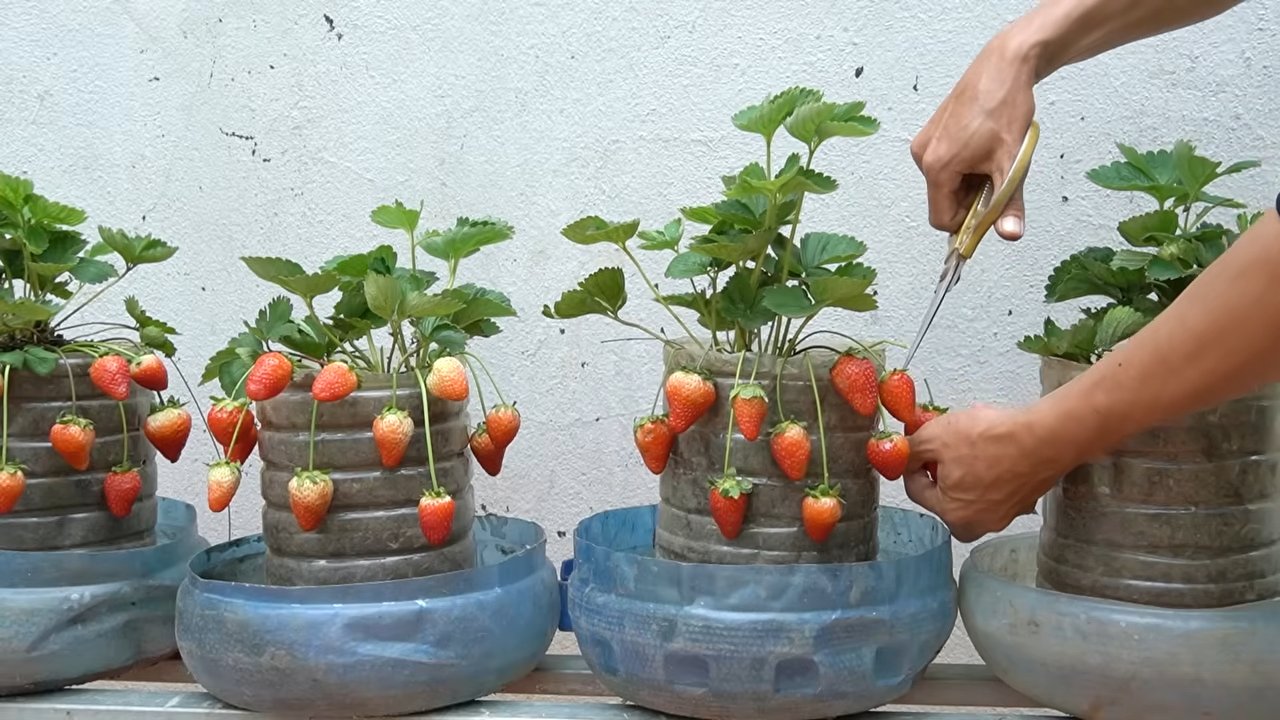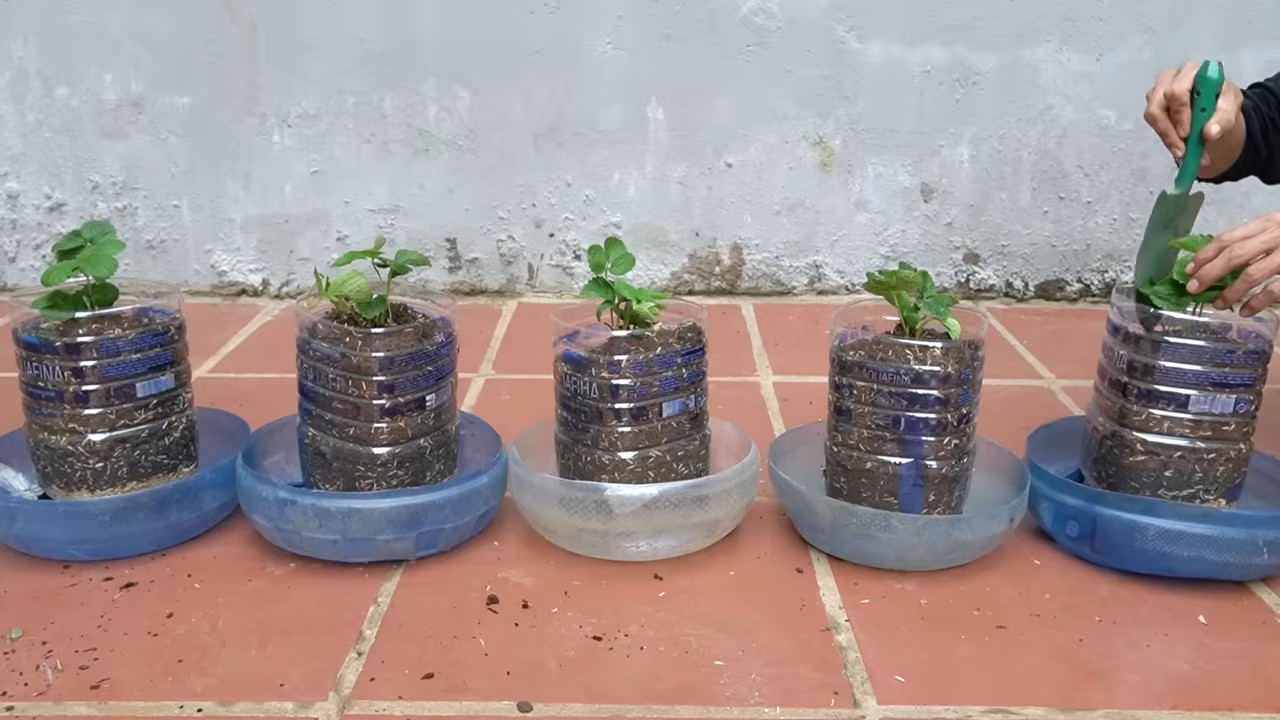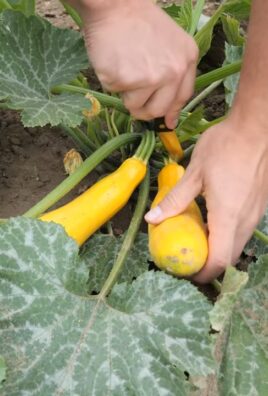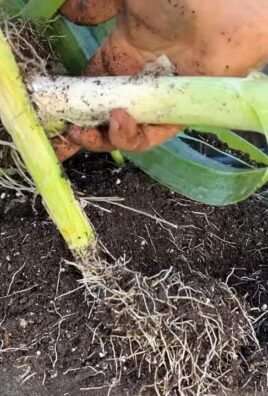Wild Strawberry Growing Tips: Ever dreamt of plucking sweet, juicy strawberries straight from your own backyard? Imagine the delight of adding a burst of wild, natural flavor to your morning cereal or a summer salad, all thanks to your own green thumb! Well, you’re in the right place, because I’m about to share some amazing DIY tricks to make that dream a reality.
For centuries, wild strawberries have held a special place in our hearts and cultures. From ancient Roman gardens to Native American traditions, these tiny berries have been cherished for their unique taste and medicinal properties. They represent a connection to nature, a taste of the wild, and a simple pleasure that transcends time.
But let’s be honest, growing wild strawberries can sometimes feel like a challenge. They’re not always as straightforward as their cultivated cousins. That’s where these DIY hacks come in! I’ve gathered the best tips and tricks to help you successfully cultivate these delightful berries, even if you’re a beginner gardener. Whether you’re looking to add a touch of rustic charm to your garden or simply want to enjoy the unparalleled flavor of homegrown wild strawberries, these wild strawberry growing tips will guide you every step of the way. Get ready to transform your garden into a wild strawberry paradise!

Growing Wild Strawberries: A DIY Guide to a Sweet Patch
Okay, so you want to grow wild strawberries? Awesome! They’re not only delicious but also super charming and relatively easy to care for. I’ve had a lot of success with them, and I’m excited to share my tips and tricks with you. This guide will walk you through everything from choosing the right spot to harvesting those tiny, flavorful berries. Let’s get started!
Choosing the Right Location
Before you even think about planting, you need to find the perfect spot for your wild strawberries. They’re not too fussy, but they do have some preferences.
* Sunlight: Wild strawberries thrive in partial to full sun. Aim for at least 6 hours of sunlight per day. If you live in a particularly hot climate, a little afternoon shade can be beneficial to prevent scorching.
* Soil: Well-draining soil is crucial. Wild strawberries don’t like to sit in soggy soil, as this can lead to root rot. A slightly acidic soil pH (between 5.5 and 6.5) is ideal.
* Space: Wild strawberries spread through runners, so give them some room to roam. A dedicated patch is great, or you can incorporate them into a rock garden or along a border.
* Protection: Consider protecting your plants from strong winds, which can damage the delicate foliage and berries.
Preparing the Soil
Once you’ve chosen your location, it’s time to get the soil ready. This is a really important step, so don’t skip it!
* Clear the Area: Remove any weeds, grass, rocks, and debris from the planting area. You want a clean slate for your strawberries.
* Amend the Soil: This is where the magic happens. Amend the soil with plenty of organic matter, such as compost, well-rotted manure, or peat moss. This will improve drainage, fertility, and water retention.
* Test the pH: Use a soil testing kit to check the pH level. If it’s too alkaline, you can lower it by adding sulfur or peat moss. If it’s too acidic, you can raise it by adding lime.
* Loosen the Soil: Use a garden fork or tiller to loosen the soil to a depth of at least 12 inches. This will make it easier for the strawberry roots to establish themselves.
Planting Your Wild Strawberries
Now for the fun part – planting! You can start wild strawberries from seeds, runners, or bare-root plants. I personally prefer starting with runners or bare-root plants, as they’re a bit easier to manage.
* Timing: The best time to plant wild strawberries is in early spring or fall. This gives them time to establish themselves before the extreme temperatures of summer or winter.
* Spacing: Space your plants about 12-18 inches apart. This will give them enough room to spread without overcrowding.
* Planting Depth: Plant the crowns of the plants at soil level. The crown is the point where the roots meet the stem. Be careful not to bury the crown too deep, as this can cause it to rot.
* Watering: Water the plants thoroughly after planting. This will help settle the soil and encourage root growth.
Step-by-Step Planting Instructions:
1. Dig a Hole: Dig a hole that’s slightly larger than the root ball of the plant.
2. Loosen the Roots: Gently loosen the roots of the plant before placing it in the hole. This will encourage them to spread out and establish themselves.
3. Place the Plant: Place the plant in the hole, making sure the crown is at soil level.
4. Backfill the Hole: Backfill the hole with soil, gently firming it around the plant.
5. Water Thoroughly: Water the plant thoroughly after planting.
Caring for Your Wild Strawberries
Once your wild strawberries are planted, it’s important to provide them with the care they need to thrive.
* Watering: Water regularly, especially during dry periods. Wild strawberries need consistent moisture to produce juicy berries. Aim for about 1 inch of water per week.
* Fertilizing: Fertilize your plants in early spring with a balanced fertilizer. Avoid over-fertilizing, as this can lead to excessive foliage growth at the expense of fruit production. I like to use a slow-release organic fertilizer.
* Weeding: Keep the area around your plants free of weeds. Weeds compete with strawberries for nutrients and water. Mulching can help suppress weeds.
* Mulching: Apply a layer of mulch around your plants. Mulch helps retain moisture, suppress weeds, and regulate soil temperature. Straw, wood chips, or pine needles are all good options.
* Pruning: Prune away any dead or damaged foliage. This will help improve air circulation and prevent disease.
* Runner Management: Wild strawberries spread through runners, which are horizontal stems that produce new plants. If you want to contain your strawberry patch, you can prune away the runners. Alternatively, you can allow the runners to spread and create a larger patch.
* Pest and Disease Control: Keep an eye out for pests and diseases. Common pests include slugs, snails, and aphids. Common diseases include powdery mildew and leaf spot. Treat any problems promptly with appropriate organic controls. I’ve found that a simple solution of soapy water can often take care of aphids.
Harvesting Your Wild Strawberries
The moment you’ve been waiting for – harvesting! Wild strawberries are usually ready to harvest in late spring or early summer.
* Ripeness: The berries are ripe when they are fully red and easily detach from the plant.
* Harvesting Technique: Gently pluck the berries from the plant. Be careful not to damage the delicate foliage.
* Timing: Harvest in the morning, after the dew has dried. This is when the berries are at their sweetest.
* Storage: Wild strawberries are best eaten fresh. However, you can store them in the refrigerator for a few days.
Tips for a Bountiful Harvest:
* Protect from Birds: Birds love wild strawberries just as much as we do! Protect your plants with netting to prevent them from eating your harvest.
* Pick Regularly: Pick the berries regularly to encourage the plants to produce more fruit.
* Don’t Overlook Hidden Berries: Wild strawberries can be small and hidden beneath the foliage, so be sure to look carefully.
Troubleshooting
Even with the best care, you might encounter some problems along the way. Here are a few common issues and how to address them:
* Lack of Fruit: If your plants aren’t producing fruit, it could be due to a lack of sunlight, poor soil fertility, or improper watering. Make sure your plants are getting enough sunlight, fertilize them regularly, and water them consistently.
* Yellowing Leaves: Yellowing leaves can be a sign of nutrient deficiency or overwatering. Check the soil pH and amend the soil if necessary. Make sure the soil is well-draining and avoid overwatering.
* Pest Infestations: Pests can damage the foliage and fruit. Inspect your plants regularly and treat any infestations promptly with appropriate organic controls.
* Disease Problems: Diseases can cause leaf spots, powdery mildew, or root rot. Improve air circulation by pruning away dead or damaged foliage. Avoid overwatering and treat any diseases with appropriate organic fungicides.
Enjoying Your Wild Strawberries
Now that you’ve harvested your wild strawberries, it’s time to enjoy them! They’re delicious eaten fresh, but you can also use them in a variety of recipes.
* Eat Them Fresh: Simply rinse the berries and enjoy them as a snack.
* Make Jam: Wild strawberry jam is a delicious and rewarding way to preserve your harvest.
* Add to Desserts: Use wild strawberries to top ice cream, yogurt, or cakes.
* Bake into Muffins or Scones: Add wild strawberries to your favorite muffin or scone recipe for a burst of flavor.
* Freeze Them: Freeze wild strawberries for later use. Simply wash and dry the berries, then spread them out on a baking sheet and freeze them until solid. Transfer the frozen berries to a freezer bag or container.
Growing wild strawberries is a rewarding experience that can provide you with a delicious and beautiful addition to your garden. With a little bit of care and attention, you can enjoy a bountiful harvest of these tiny, flavorful berries. Happy gardening!

Conclusion
So, there you have it! Mastering the art of growing wild strawberries doesn’t require a green thumb of mythical proportions. It’s about understanding their needs, providing the right environment, and a little bit of patience. We’ve explored the essential elements, from seed starting and soil preparation to transplanting and ongoing care. Remember, these tiny berries pack a powerful punch of flavor, far surpassing their cultivated cousins in intensity.
Why is this DIY approach a must-try? Because it connects you directly to the source of your food, offering a rewarding experience that store-bought berries simply can’t replicate. Imagine the satisfaction of harvesting your own wild strawberries, knowing you nurtured them from tiny seeds to plump, juicy fruits. Plus, you’ll be contributing to biodiversity in your garden, attracting pollinators and creating a haven for beneficial insects.
But the journey doesn’t end here. Feel free to experiment with different growing mediums. While we recommended a well-draining, slightly acidic soil mix, you might find success with other combinations. Consider adding a layer of pine needles or oak leaves to the soil surface to further enhance acidity and retain moisture.
Variations to Explore:
* Vertical Gardening: Wild strawberries thrive in hanging baskets or vertical planters, making them ideal for small spaces. This also helps to keep the berries off the ground, reducing the risk of rot and pests.
* Companion Planting: Plant wild strawberries alongside herbs like thyme or rosemary, which can help deter pests and enhance their flavor.
* Wild Strawberry Jam: Once you’ve harvested a bountiful crop, transform your berries into delicious homemade jam. The intense flavor of wild strawberries makes for an unforgettable preserve.
* Wild Strawberry Infused Vinegar: For a unique culinary twist, infuse white wine vinegar with wild strawberries. This adds a delightful fruity tang to salads and marinades.
Don’t be afraid to get creative and adapt these techniques to your specific environment and preferences. The key is to observe your plants closely and respond to their needs.
We wholeheartedly encourage you to embark on this rewarding adventure of growing wild strawberries. It’s a journey filled with learning, discovery, and ultimately, the sweet taste of success.
And now, we want to hear from you! Have you tried growing wild strawberries before? What challenges did you face, and what successes did you celebrate? Share your experiences, tips, and photos in the comments below. Let’s create a community of wild strawberry enthusiasts, learning and growing together. Your insights could be invaluable to other readers who are just starting out. Let’s cultivate a thriving community around the joy of growing wild strawberries!
Frequently Asked Questions (FAQ)
What is the best time of year to plant wild strawberry seeds?
The ideal time to start wild strawberry seeds indoors is late winter or early spring, approximately 8-10 weeks before the last expected frost. This allows the seedlings ample time to develop before transplanting them outdoors in the spring. If you are directly sowing seeds outdoors, wait until after the last frost and the soil has warmed up.
How long does it take for wild strawberry seeds to germinate?
Wild strawberry seeds can be notoriously slow to germinate. It can take anywhere from 2 to 6 weeks, or even longer, for seedlings to emerge. Patience is key! Ensure the soil remains consistently moist but not waterlogged during this period. Providing bottom heat, such as with a seedling heat mat, can also help to speed up germination.
What type of soil is best for growing wild strawberries?
Wild strawberries prefer well-draining, slightly acidic soil with a pH between 5.5 and 6.5. A mixture of equal parts potting soil, peat moss, and perlite or vermiculite works well. You can also amend your garden soil with compost or well-rotted manure to improve drainage and fertility. Avoid heavy clay soils, as they can become waterlogged and inhibit root growth.
How much sunlight do wild strawberries need?
Wild strawberries thrive in full sun to partial shade. Ideally, they should receive at least 6 hours of direct sunlight per day. However, in hotter climates, they may benefit from some afternoon shade to prevent scorching. Observe your plants closely and adjust their location as needed to ensure they are receiving the optimal amount of sunlight.
How often should I water wild strawberries?
Water wild strawberries regularly, especially during dry periods. The soil should be kept consistently moist but not waterlogged. Water deeply whenever the top inch of soil feels dry to the touch. Avoid overhead watering, as this can promote fungal diseases. Instead, water at the base of the plants.
Do wild strawberries need fertilizer?
Wild strawberries benefit from regular fertilization, especially during the growing season. Use a balanced fertilizer, such as a 10-10-10 or 14-14-14, according to the package instructions. You can also use organic fertilizers, such as compost tea or fish emulsion. Avoid over-fertilizing, as this can lead to excessive foliage growth and reduced fruit production.
How do I protect wild strawberries from pests and diseases?
Wild strawberries are generally resistant to pests and diseases, but they can be susceptible to certain problems, such as slugs, snails, and fungal diseases. To protect your plants, keep the area around them clean and free of debris. Use organic pest control methods, such as diatomaceous earth or neem oil, to control slugs and snails. Ensure good air circulation to prevent fungal diseases.
How do I harvest wild strawberries?
Wild strawberries are ready to harvest when they are fully ripe and easily detach from the plant. Gently pluck the berries from the stem, being careful not to damage the plant. Harvest regularly to encourage continued fruit production.
Can I grow wild strawberries in containers?
Yes, wild strawberries are well-suited to container gardening. Choose a pot that is at least 6 inches in diameter and has drainage holes. Use a well-draining potting mix and water regularly. Container-grown wild strawberries may need to be fertilized more frequently than those grown in the ground.
Are wild strawberries invasive?
Wild strawberries can spread through runners, but they are not generally considered to be invasive. However, if you want to control their spread, you can prune the runners regularly or grow them in containers.
How do I overwinter wild strawberries?
In colder climates, wild strawberries may need some protection during the winter. Mulch around the plants with straw or leaves to insulate the roots. You can also cover them with a row cover or cold frame. In very cold climates, you may need to bring container-grown plants indoors.
What are the health benefits of wild strawberries?
Wild strawberries are packed with antioxidants, vitamins, and minerals. They are a good source of vitamin C, manganese, and fiber. They have been shown to have anti-inflammatory and anti-cancer properties. Enjoying your own homegrown wild strawberries is a delicious and healthy treat!





Leave a Comment